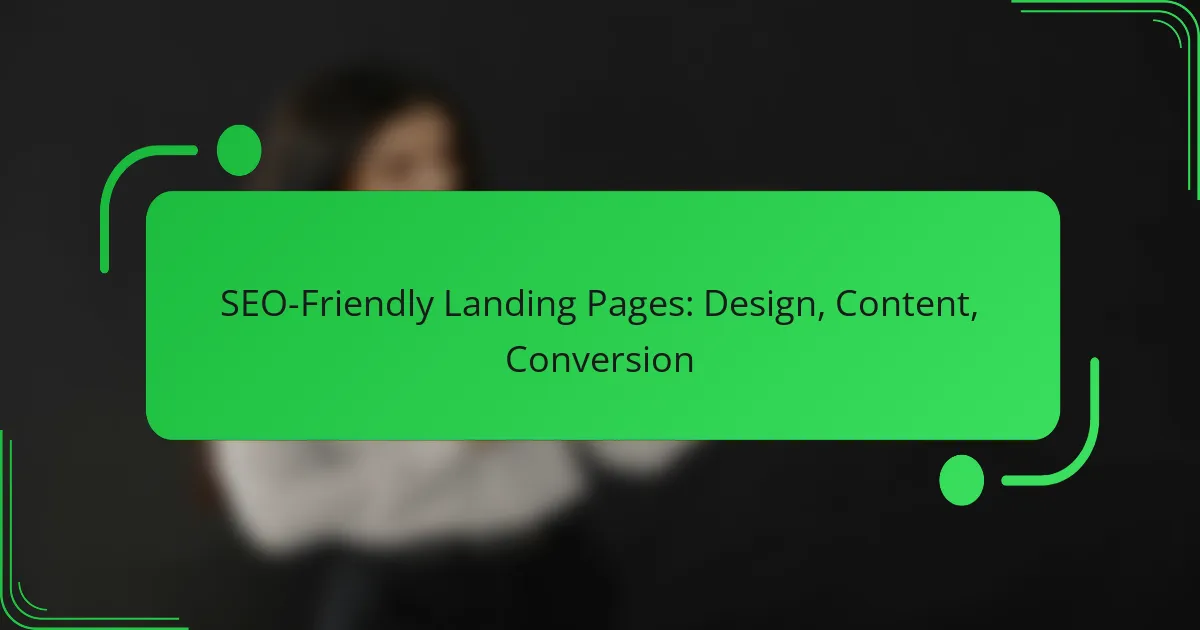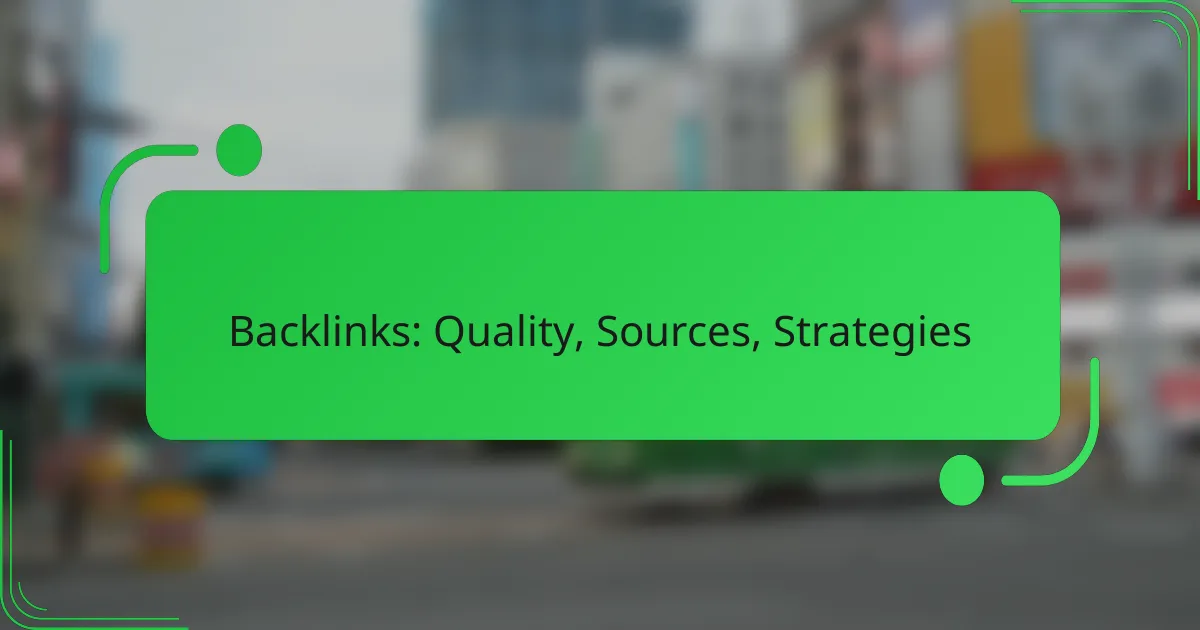Creating SEO-friendly landing pages is essential for enhancing both visibility and conversion rates. By optimizing design elements and crafting engaging content, you can create a user-friendly experience that encourages visitors to take action. Key strategies include ensuring mobile optimization, using clear calls to action, and incorporating trust signals to build credibility.
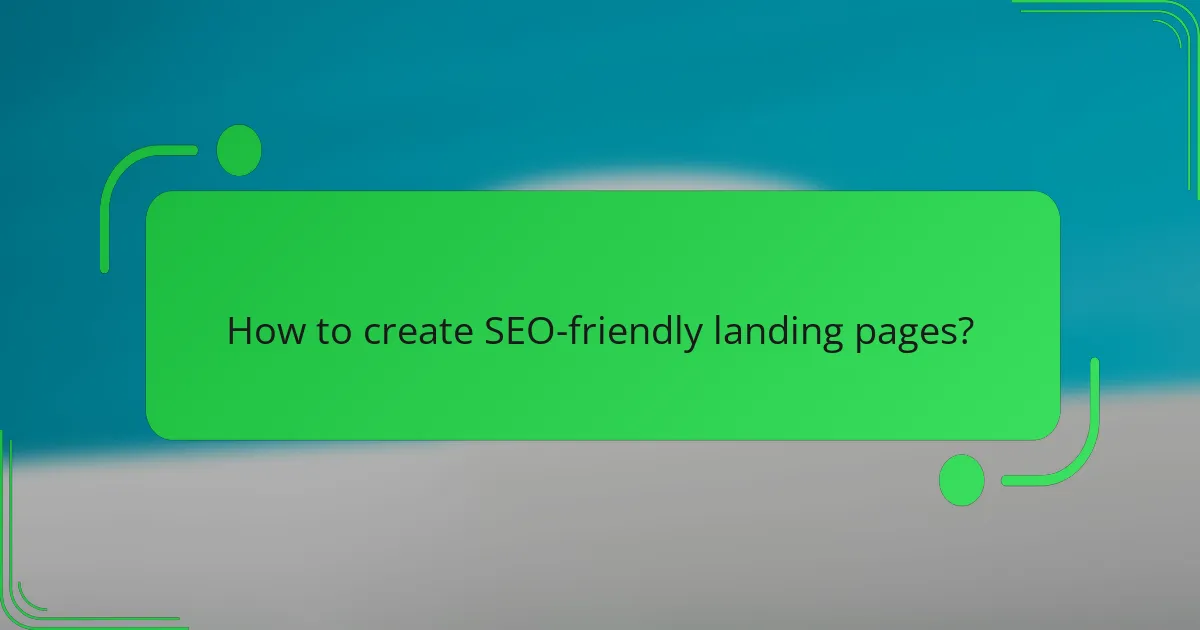
How to create SEO-friendly landing pages?
Creating SEO-friendly landing pages involves optimizing both design and content to enhance visibility and conversion rates. Key elements include focusing on user experience, ensuring mobile optimization, and using clear calls to action.
Focus on user experience
User experience (UX) is crucial for retaining visitors and encouraging conversions. A well-designed landing page should be intuitive, visually appealing, and easy to navigate. Consider using a clean layout with ample white space, engaging visuals, and a logical flow of information.
To enhance UX, ensure that important information is easily accessible. Use headings, bullet points, and short paragraphs to break up text, making it scannable. Avoid clutter and distractions that may divert attention from the main goal of the page.
Optimize for mobile devices
With a significant portion of web traffic coming from mobile devices, optimizing landing pages for mobile is essential. Ensure that your design is responsive, meaning it adjusts seamlessly to different screen sizes. This includes using larger buttons and text that is easy to read on smaller screens.
Test your landing pages on various devices to identify any usability issues. Tools like Google’s Mobile-Friendly Test can help evaluate how well your page performs on mobile. Prioritize a mobile-first approach in your design process to cater to this growing audience.
Use clear calls to action
Clear calls to action (CTAs) guide visitors toward the desired action, such as signing up or making a purchase. Use concise and compelling language that communicates the value of taking action. Phrases like “Get Started” or “Download Now” can be effective.
Position your CTAs prominently on the page, ensuring they stand out visually. Consider using contrasting colors and larger fonts to draw attention. Avoid overwhelming visitors with too many options; focus on one primary action to increase conversion rates.
Incorporate relevant keywords
Integrating relevant keywords into your landing page content helps improve search engine rankings. Conduct keyword research to identify terms that your target audience is searching for, and naturally incorporate these into headings, subheadings, and body text.
Aim for a balance between keyword usage and readability. Overstuffing keywords can lead to penalties from search engines and deter visitors. Instead, focus on providing valuable content that addresses user intent while including keywords where appropriate.
Ensure fast loading times
Fast loading times are critical for retaining visitors and improving SEO rankings. Aim for a loading time of under three seconds, as delays can lead to higher bounce rates. Optimize images, leverage browser caching, and minimize the use of heavy scripts to enhance performance.
Use tools like Google PageSpeed Insights to analyze your loading times and identify areas for improvement. Regularly monitor your page speed, especially after making updates or adding new content, to ensure optimal performance.
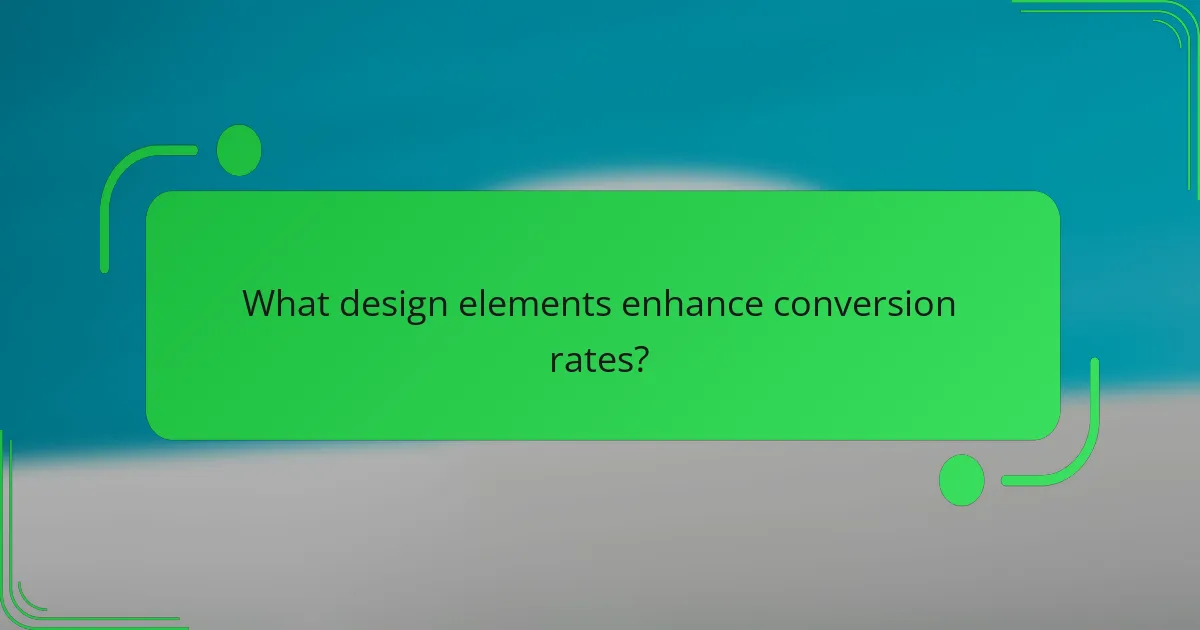
What design elements enhance conversion rates?
Effective design elements can significantly boost conversion rates by creating a user-friendly experience that encourages visitors to take action. Key aspects include compelling visuals, a clean layout, and the incorporation of trust signals, all of which contribute to a persuasive landing page.
Utilize compelling visuals
Compelling visuals, such as high-quality images and engaging videos, can capture attention and convey your message quickly. Use visuals that are relevant to your product or service to enhance understanding and retention.
Consider using infographics or illustrations to simplify complex information. Aim for visuals that load quickly and are optimized for various devices to ensure a seamless user experience.
Implement a clean layout
A clean layout minimizes distractions and guides the visitor’s focus toward the call to action. Use ample white space, clear headings, and a logical flow of information to create an intuitive navigation experience.
Limit the number of elements on the page to avoid overwhelming users. A good rule of thumb is to keep essential information above the fold and use bullet points for easy readability.
Incorporate trust signals
Trust signals, such as customer testimonials, reviews, and security badges, can enhance credibility and encourage conversions. Displaying these elements prominently can reassure visitors about the quality and safety of their purchase.
Consider including recognizable logos of payment providers or certifications to further bolster trust. Aim for a mix of social proof and professional endorsements to appeal to a broader audience.
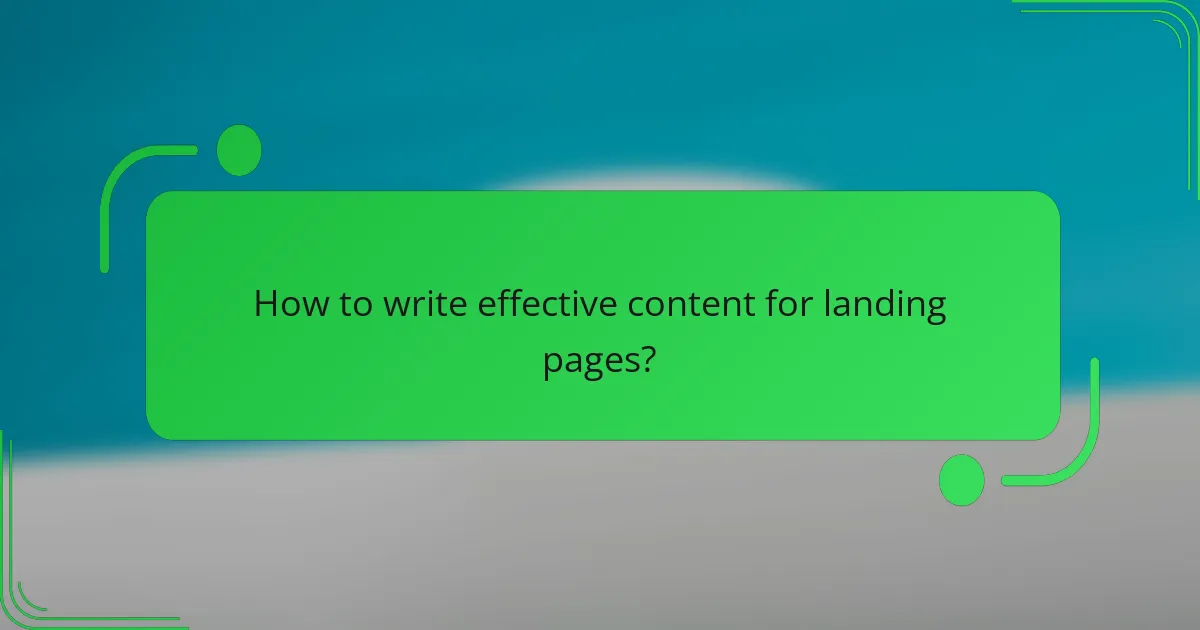
How to write effective content for landing pages?
Effective content for landing pages is clear, concise, and tailored to the audience’s needs. It should engage visitors quickly and guide them toward taking a specific action, such as making a purchase or signing up for a newsletter.
Craft engaging headlines
Engaging headlines are crucial as they are the first thing visitors see. A strong headline should be attention-grabbing and clearly convey the value of what you offer. Aim for headlines that are under 10 words and incorporate relevant keywords to improve SEO.
Consider using numbers, questions, or strong action verbs to make your headlines more compelling. For example, “Boost Your Sales by 50% in Just 30 Days” is more enticing than a generic statement.
Use persuasive language
Persuasive language helps to create an emotional connection with your audience. Use words that evoke feelings and encourage action, such as “discover,” “achieve,” or “unlock.” This can motivate visitors to engage with your content.
Keep your tone conversational and relatable. Avoid jargon unless it’s industry-specific and your audience is familiar with it. Instead, focus on clear, direct language that speaks to the reader’s needs and desires.
Highlight benefits over features
When writing content, emphasize the benefits of your product or service rather than just listing features. Benefits explain how your offering solves a problem or improves the user’s life, making it more appealing.
For instance, instead of saying “Our software has a user-friendly interface,” you could say, “Our software saves you time with its intuitive design, allowing you to focus on what matters most.” This approach resonates more with potential customers.
Include testimonials and case studies
Testimonials and case studies build credibility and trust. They provide social proof that your product or service delivers results. Include quotes from satisfied customers or detailed case studies showcasing how your offering has helped others.
Make sure to use real names and photos if possible, as this adds authenticity. A well-placed testimonial can significantly increase conversion rates, so consider featuring them prominently on your landing page.
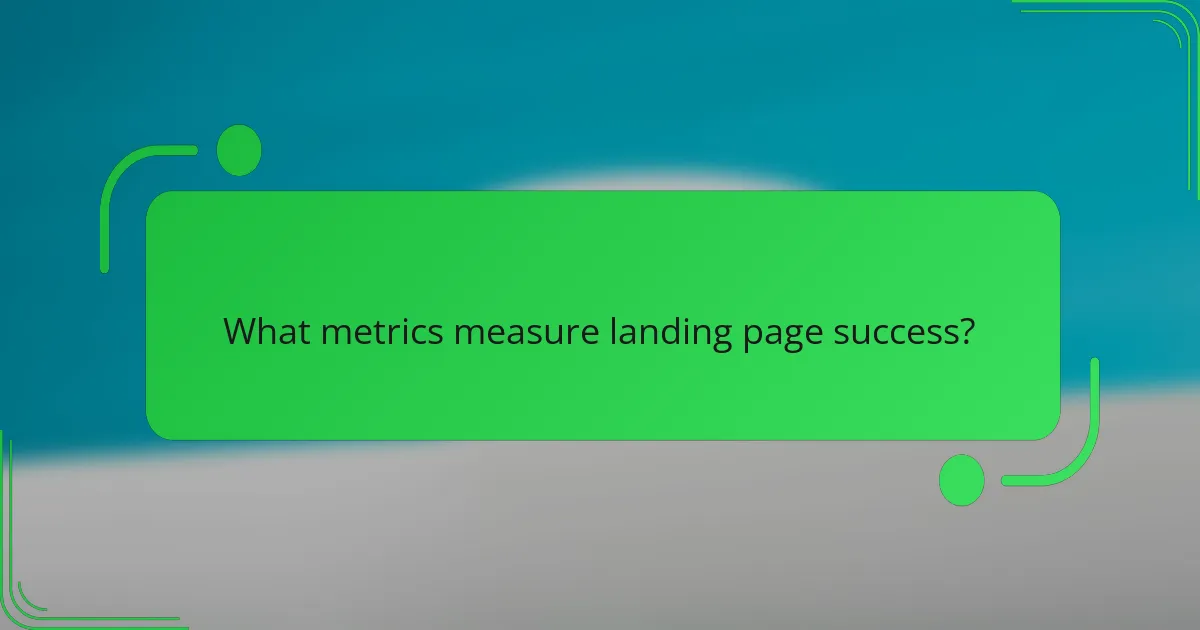
What metrics measure landing page success?
Landing page success can be measured through several key metrics that indicate how well the page is performing in terms of user engagement and conversion. The most critical metrics include conversion rates, bounce rates, and average session duration, each providing insights into different aspects of user behavior.
Track conversion rates
Conversion rates reflect the percentage of visitors who complete a desired action, such as signing up for a newsletter or making a purchase. A high conversion rate indicates that your landing page effectively persuades visitors to take action.
To improve conversion rates, focus on clear calls-to-action (CTAs), compelling headlines, and user-friendly design. Regularly A/B test different elements, such as button colors and placement, to identify what resonates best with your audience.
Analyze bounce rates
Bounce rates measure the percentage of visitors who leave your landing page without interacting further. A high bounce rate may suggest that the content is not engaging or relevant to the audience.
To reduce bounce rates, ensure that your landing page aligns with the expectations set by your marketing efforts. Use engaging visuals and concise, relevant content to capture attention and encourage users to explore further.
Monitor average session duration
Average session duration indicates how long visitors stay on your landing page. Longer session durations often correlate with higher engagement levels, suggesting that users find the content valuable.
To increase average session duration, provide informative content, such as videos or interactive elements, that encourages users to stay longer. Avoid cluttered designs that may distract or overwhelm visitors, leading them to leave prematurely.
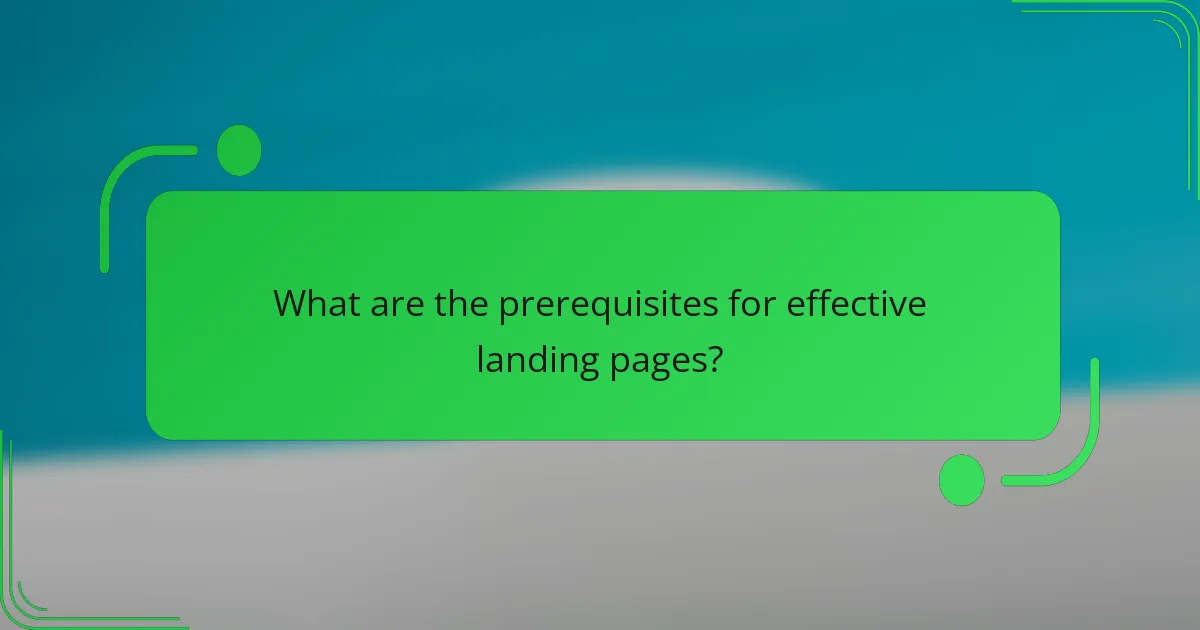
What are the prerequisites for effective landing pages?
Effective landing pages require a clear understanding of your target audience and thorough keyword research. These elements ensure that the content resonates with visitors and ranks well in search engines, ultimately driving conversions.
Define target audience
Defining your target audience is crucial for creating landing pages that engage and convert. Start by identifying demographics such as age, gender, location, and interests, which will help tailor your messaging and design.
Use tools like surveys, social media insights, and website analytics to gather data about your audience. Creating buyer personas can also clarify who you are targeting, making it easier to craft relevant content that speaks directly to their needs.
Conduct keyword research
Keyword research is essential for optimizing landing pages for search engines. Identify relevant keywords that your target audience is likely to use when searching for products or services like yours. Tools such as Google Keyword Planner or SEMrush can help you find popular search terms and their search volumes.
Focus on a mix of short-tail and long-tail keywords to capture a broader audience while also targeting specific queries. Incorporate these keywords naturally into your page content, headings, and meta descriptions to improve visibility and relevance in search results.
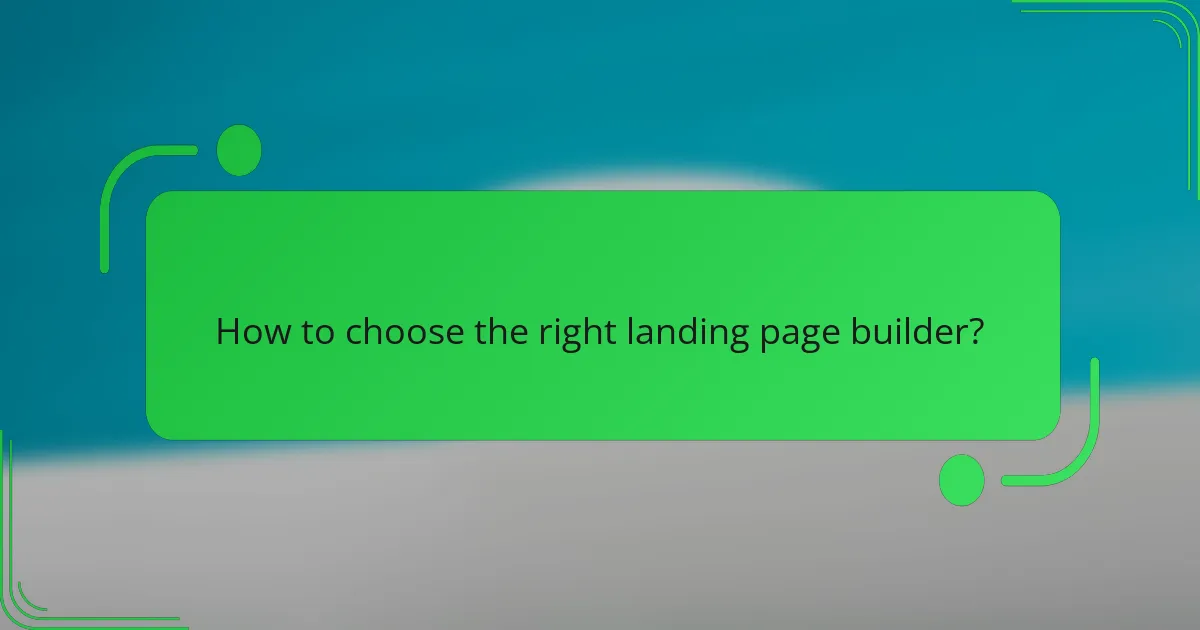
How to choose the right landing page builder?
Selecting the right landing page builder is crucial for creating effective pages that convert visitors into customers. Consider factors such as ease of use, customization options, integration capabilities, and pricing to find a builder that meets your specific needs.
Ease of Use
When choosing a landing page builder, prioritize ease of use. A user-friendly interface allows you to create and modify pages quickly without needing extensive technical skills. Look for drag-and-drop functionality and pre-designed templates that simplify the design process.
Customization Options
Customization is key to ensuring your landing page aligns with your brand identity. Choose a builder that offers a variety of design elements, such as fonts, colors, and layouts. The ability to add custom code can also be beneficial for advanced users who want to implement unique features.
Integration Capabilities
Ensure the landing page builder integrates seamlessly with your existing tools, such as email marketing platforms, CRM systems, and analytics software. This connectivity can streamline your workflow and enhance your marketing efforts, allowing for better tracking and management of leads.
Pricing
Consider the pricing structure of the landing page builder. Many options are available, ranging from free plans with limited features to premium subscriptions that offer advanced functionalities. Evaluate your budget and the potential return on investment to determine the best fit for your business.
